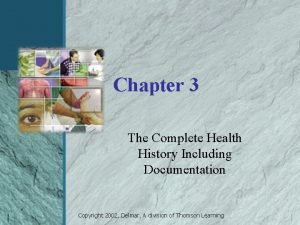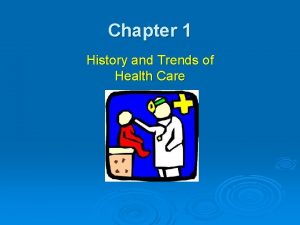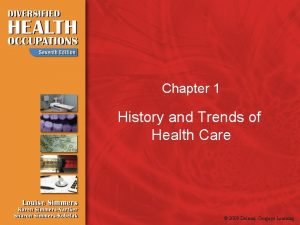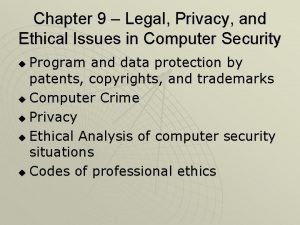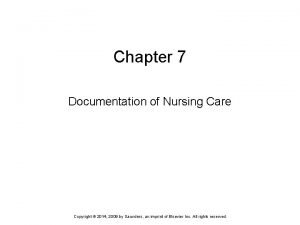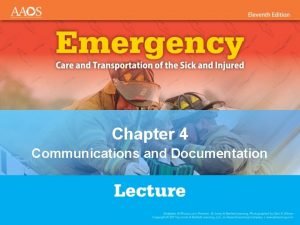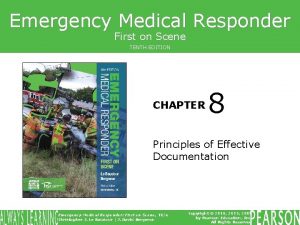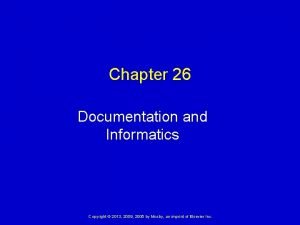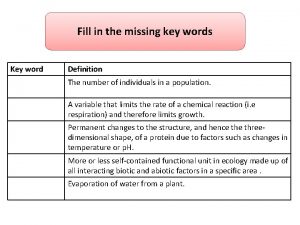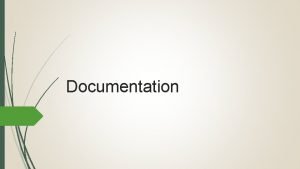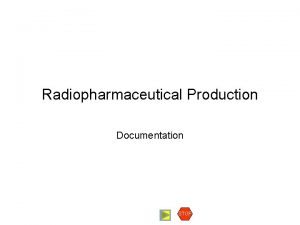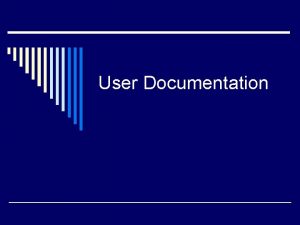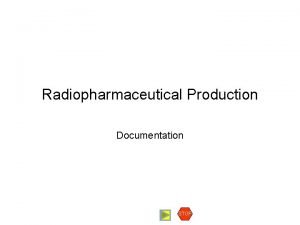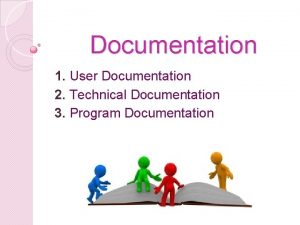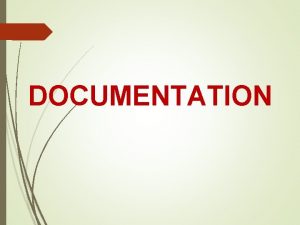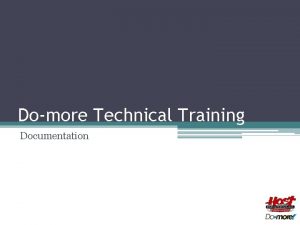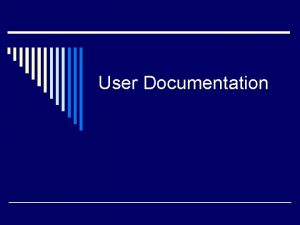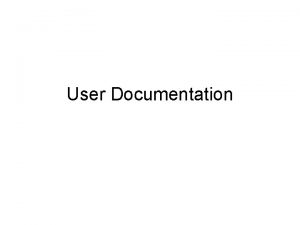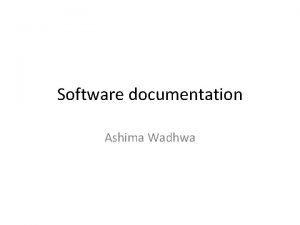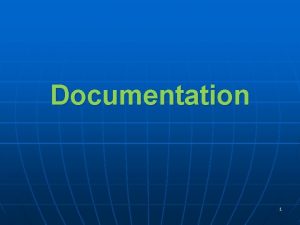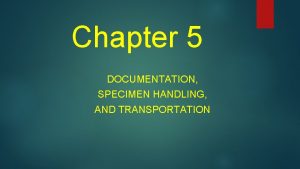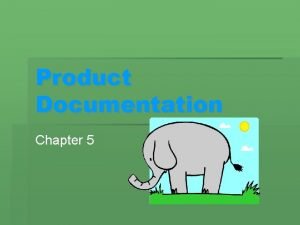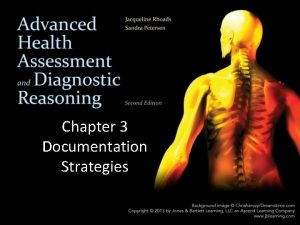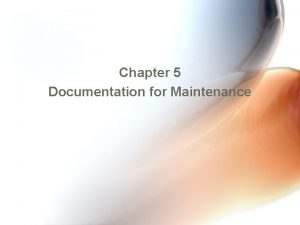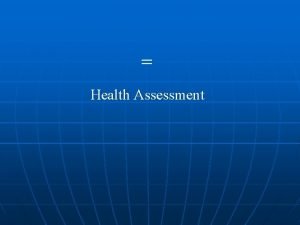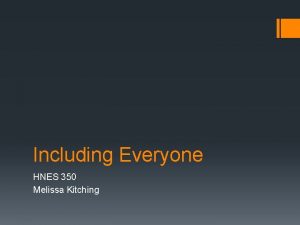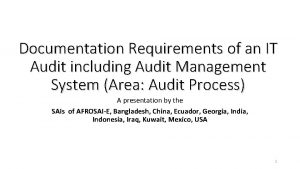Chapter 3 The Complete Health History Including Documentation





































- Slides: 37

Chapter 3 The Complete Health History Including Documentation Copyright 2002, Delmar, A division of Thomson Learning

Competencies l l l State the purpose of the four different types of health history and provide an example of when each is used. Identify the components of the complete health history. Describe how to assess the ten characteristics of a chief complaint. (continues) Copyright 2002, Delmar, A division of Thomson Learning

Competencies l l l Diagram a patient’s genogram correctly. Demonstrate sensitivity to patients of different races, religions, ethnic backgrounds, sexual orientations, and socioeconomic status when conducting a health history. Conduct a complete health history on ill and well patients and record data. Copyright 2002, Delmar, A division of Thomson Learning

Types of Health History l l l Provides information on the patient’s health status: social, emotional, physical, cultural, and spiritual identity Complete health history Episodic health history Interval or follow-up health history Emergency health history Copyright 2002, Delmar, A division of Thomson Learning

Identifying Information Included in Medical Record l l l Patient name Address Occupation Insurance Phone number (continues) Copyright 2002, Delmar, A division of Thomson Learning

Identifying Information Included in Medical Record l l l Usual source of health care Date of birth Birth place Emergency contact Social security number Copyright 2002, Delmar, A division of Thomson Learning

Complete Health History l l Patient profile Reason for seeking health care Chief complaint (CC) £ Sign £ Symptom £ l Present health and history of present illness (HPI) Copyright 2002, Delmar, A division of Thomson Learning

Ten Characteristics of a Chief Complaint l l l Location Radiation Quality Quantity Associated manifestations £ Pertinent negatives (continues) Copyright 2002, Delmar, A division of Thomson Learning

Ten Characteristics of a Chief Complaint l l l Aggravating factors Alleviating factors Setting Timing Meaning and impact Copyright 2002, Delmar, A division of Thomson Learning

Past Health History (PHH) l l Provides information on the patient’s health status from birth to present Medical history Chronic illness £ Episodic illness £ Sequelae £ (continues) Copyright 2002, Delmar, A division of Thomson Learning

Past Health History l Surgical history Major procedures £ Minor procedures £ Include year performed, hospital, physician, sequelae £ (continues) Copyright 2002, Delmar, A division of Thomson Learning

Past Health History l Medications £ £ £ Prescription Over-the-counter Herbs Home remedies General questions Dose Frequency Side effects Purpose (continues) Copyright 2002, Delmar, A division of Thomson Learning

Past Health History l Communicable diseases £ Infectious £ Pertussis Tuberculosis Hepatitis AIDS Sexually transmitted Gonorrhea Syphilis Chlamydia Herpes (continues) Copyright 2002, Delmar, A division of Thomson Learning

Past Health History l Allergies Medications £ Food £ Animals £ Environment £ Symptoms £ Treatment £ Complications £ (continues) Copyright 2002, Delmar, A division of Thomson Learning

Past Health History l l l Injuries/accidents Special needs Blood transfusions (continues) Copyright 2002, Delmar, A division of Thomson Learning

Past Health History l Childhood illnesses Varicella £ Diptheria £ Measles, mumps, rubella £ Polio, rheumatic or scarlet fever £ (continues) Copyright 2002, Delmar, A division of Thomson Learning

Past Health History l Immunizations: childhood MMR £ Polio £ Smallpox £ DPT £ Haemophilus influenza b (Hib) £ Hepatitis B £ (continues) Copyright 2002, Delmar, A division of Thomson Learning

Past Health History l Immunizations: adult £ £ £ £ £ Varicella Hepatitis A Hepatitis B Influenza Tetanus Pneumococcal Lyme Meningococcal Last TB test (date and results) Copyright 2002, Delmar, A division of Thomson Learning

Family Health History (FHH) l l l Records the health status of the patient and immediate blood relatives. Contains age and health status of the patient, spouse, children, siblings, and the patient’s parents. Document information in a genogram and in a list of familial diseases. Copyright 2002, Delmar, A division of Thomson Learning

Social History (SH) l l Records information about the patient’s lifestyle that may impact health Tips for obtaining information £ £ £ Establish rapport Direct eye-contact Pose questions in a matter of fact tone Nonjudgmental demeanor Normalizing (continues) Copyright 2002, Delmar, A division of Thomson Learning

Social History l Alcohol use £ Thorough assessment to include: Quantity of alcohol consumed Frequency of consumption Age at first drink Pattern of consumption Length of time consuming current amount History of loss of consciousness or blackouts (continues) Copyright 2002, Delmar, A division of Thomson Learning

Social History l Time of day when drinking occurs Drink alone or with others Drink and drive Self perception of drinking CAGE questionnaire (Mayfield, Mc. Leod & Hall, 1974) £ Have you ever felt you should cut down on your alcohol intake? (continues) Copyright 2002, Delmar, A division of Thomson Learning

Social History Have people annoyed you by criticizing your alcohol intake? £ Have you ever felt guilty about your alcohol intake? £ Have you ever needed alcohol for an eye-opener (morning consumption)? £ l Tobacco use Pack/year history £ Type of tobacco used £ (continues) Copyright 2002, Delmar, A division of Thomson Learning

Social History Age started to use tobacco £ Quantity used on daily basis £ Previous attempts to quit £ Self-perception of tobacco use £ Live or work with smoker £ l Drug use £ Prescription and over-the-counter medications (continues) Copyright 2002, Delmar, A division of Thomson Learning

Social History Illegal and recreational drugs £ Same types of questions used for determining alcohol use £ l l l Sexual practices, specific questions Sexual orientation Past sexual practice Number of partners Birth control method (continues) Copyright 2002, Delmar, A division of Thomson Learning

Social History l l l Measures to prevent exchange of body fluids Presence of STDs Satisfaction with sexual performance/needs Travel history Work environment (continues) Copyright 2002, Delmar, A division of Thomson Learning

Social History l Home environment Physical £ Psychosocial £ l l Hobbies or leisure activities Stress Education Economic status (continues) Copyright 2002, Delmar, A division of Thomson Learning

Social History l l l Military service Religion Ethnic background Roles/relationships Functional health assessment £ Activities of daily living (continues) Copyright 2002, Delmar, A division of Thomson Learning

Social History l Health maintenance activities (HMA) Sleep £ Diet £ Exercise £ Stress management £ Use of safety devices £ Health check-ups £ Copyright 2002, Delmar, A division of Thomson Learning

Review of Systems (ROS) l l Cephalo-caudal approach Questions Sign/symptom related £ Disease related questions £ Copyright 2002, Delmar, A division of Thomson Learning

Documentation Guidelines l Ensure accuracy Record information immediately upon completion of patient encounter £ Correct patient record or chart £ Avoid distractions while documenting £ Proofread your entry for accuracy and completeness £ (continues) Copyright 2002, Delmar, A division of Thomson Learning

Documentation Guidelines l l l Date and time each entry Sign each entry with full legal name and professional credentials Write legibly Use permanent ink (black preferred) Do not leave a space between entries (continues) Copyright 2002, Delmar, A division of Thomson Learning

Documentation Guidelines l l l Use quotes to indicate direct patient response Document in chronological order Document in complete but concise manner using phrases and abbreviations as appropriate (continues) Copyright 2002, Delmar, A division of Thomson Learning

Documentation Guidelines l l Document telephone calls that relate to the patient’s case Never correct another person’s entry Use a single line to cross out an error, then date, time and sign correction If it is not documented, it was not done Copyright 2002, Delmar, A division of Thomson Learning

Assessment-Specific Documentation Guidelines l l Record pertinent positive and negative assessment data Document any parts of the assessment that are omitted or refused by the patient Avoid using judgmental language Avoid evaluative statements; cite specific statements or actions you observe (continues) Copyright 2002, Delmar, A division of Thomson Learning

Assessment-Specific Documentation Guidelines l l l State time intervals precisely Use specific measurements Draw pictures when appropriate (continues) Copyright 2002, Delmar, A division of Thomson Learning

Assessment-Specific Documentation Guidelines l l Refer to findings using anatomic landmarks Use the face of a clock to describe findings that are in a circular pattern Document any change in the patient’s condition during a visit or from previous visits Describe what you observed, not what you did Copyright 2002, Delmar, A division of Thomson Learning
 Complete health history
Complete health history Mental health documentation training
Mental health documentation training Test chapter 1 history and trends of health care
Test chapter 1 history and trends of health care Chapter 1 history and trends of healthcare
Chapter 1 history and trends of healthcare Chapter 9: ethics of documentation and authentication
Chapter 9: ethics of documentation and authentication Nursing narrative note example
Nursing narrative note example Chapter 4 communications and documentation
Chapter 4 communications and documentation Chapter 8 principles of effective documentation
Chapter 8 principles of effective documentation Chapter 26 documentation and informatics
Chapter 26 documentation and informatics Complete the missing word to complete the three key words
Complete the missing word to complete the three key words Simple subject
Simple subject Chapter 3 health wellness and health disparities
Chapter 3 health wellness and health disparities Chapter 1 lesson 2 what affects your health
Chapter 1 lesson 2 what affects your health Understanding health and wellness
Understanding health and wellness Hát kết hợp bộ gõ cơ thể
Hát kết hợp bộ gõ cơ thể Bổ thể
Bổ thể Tỉ lệ cơ thể trẻ em
Tỉ lệ cơ thể trẻ em Gấu đi như thế nào
Gấu đi như thế nào Glasgow thang điểm
Glasgow thang điểm Chúa sống lại
Chúa sống lại Các môn thể thao bắt đầu bằng tiếng chạy
Các môn thể thao bắt đầu bằng tiếng chạy Thế nào là hệ số cao nhất
Thế nào là hệ số cao nhất Các châu lục và đại dương trên thế giới
Các châu lục và đại dương trên thế giới Công thức tính độ biến thiên đông lượng
Công thức tính độ biến thiên đông lượng Trời xanh đây là của chúng ta thể thơ
Trời xanh đây là của chúng ta thể thơ Mật thư tọa độ 5x5
Mật thư tọa độ 5x5 Phép trừ bù
Phép trừ bù Phản ứng thế ankan
Phản ứng thế ankan Các châu lục và đại dương trên thế giới
Các châu lục và đại dương trên thế giới Thơ thất ngôn tứ tuyệt đường luật
Thơ thất ngôn tứ tuyệt đường luật Quá trình desamine hóa có thể tạo ra
Quá trình desamine hóa có thể tạo ra Một số thể thơ truyền thống
Một số thể thơ truyền thống Bàn tay mà dây bẩn
Bàn tay mà dây bẩn Vẽ hình chiếu vuông góc của vật thể sau
Vẽ hình chiếu vuông góc của vật thể sau Biện pháp chống mỏi cơ
Biện pháp chống mỏi cơ đặc điểm cơ thể của người tối cổ
đặc điểm cơ thể của người tối cổ V. c c
V. c c
